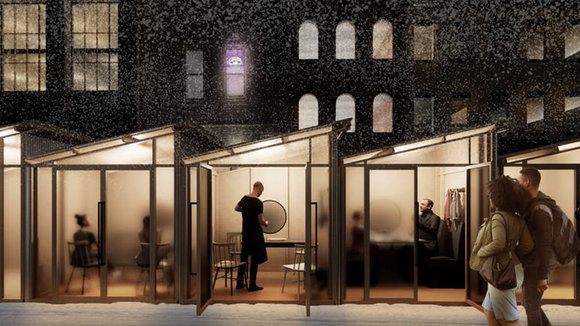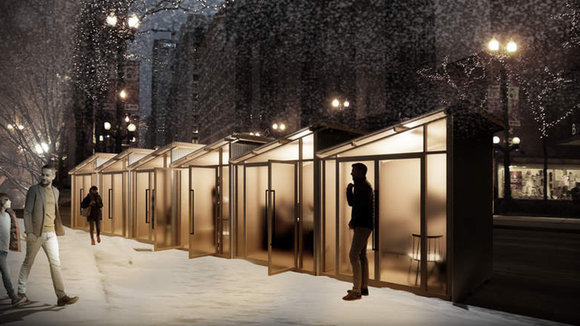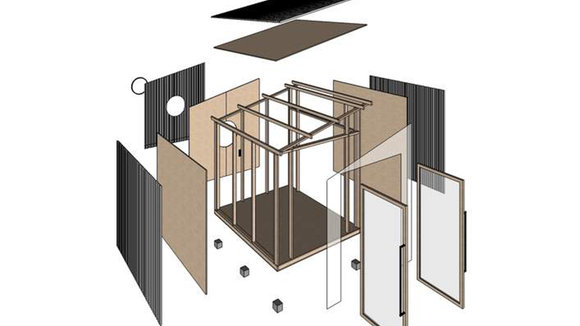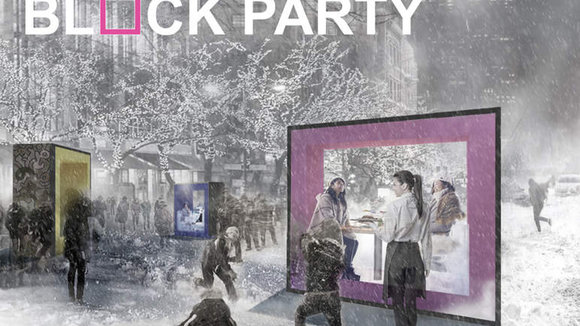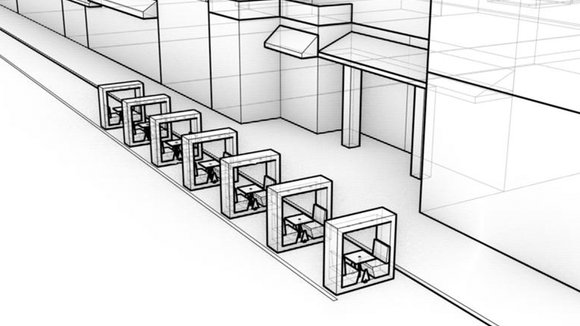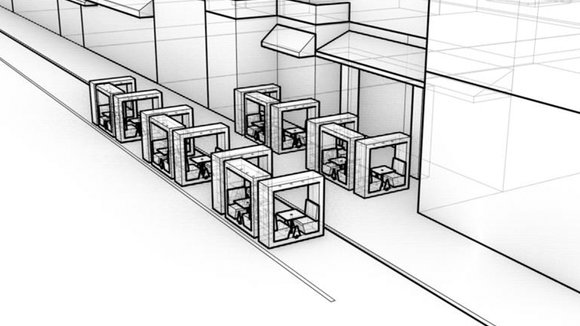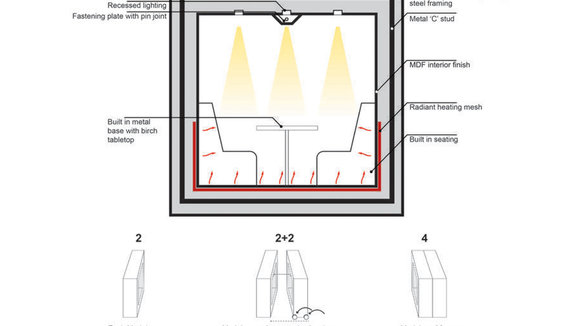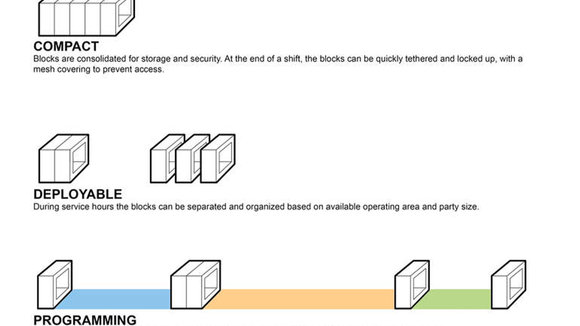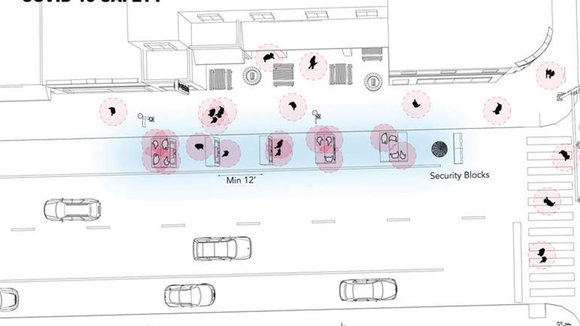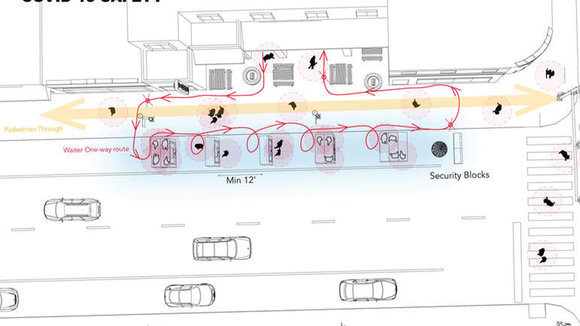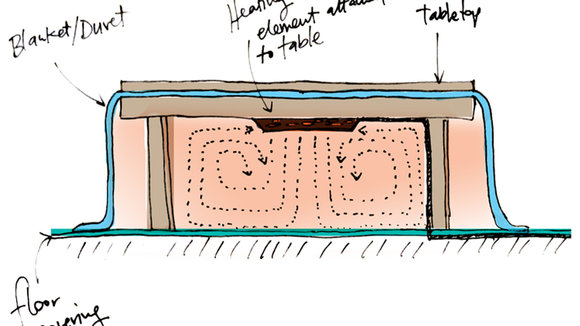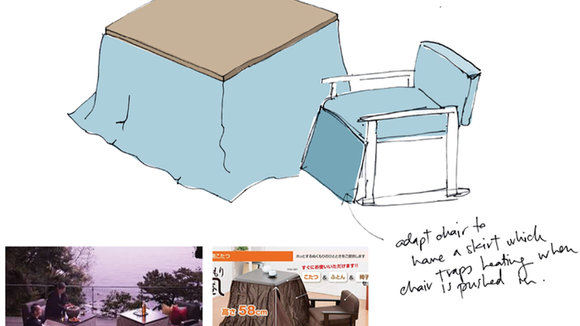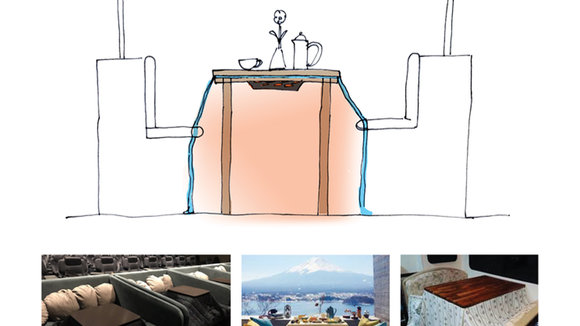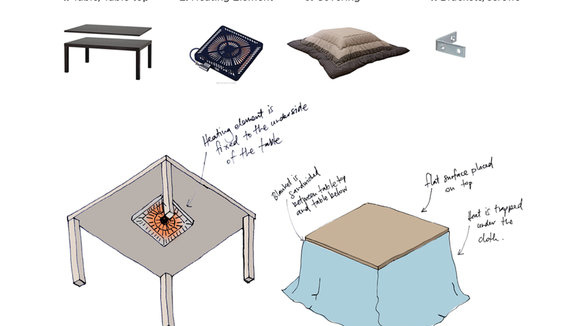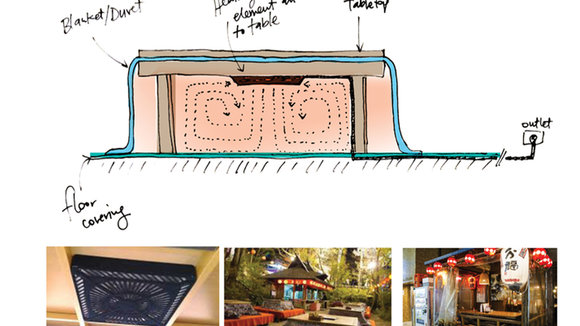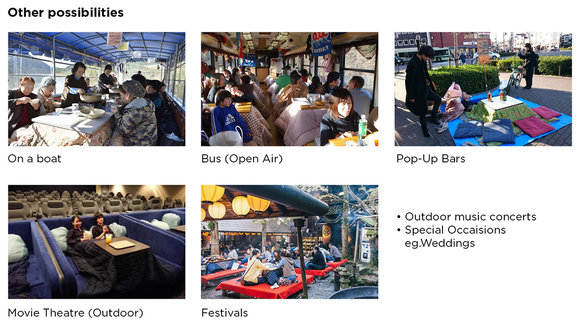1/17
IDEO’s Winter Dining challenge’s winning designs balance safety without sacrificing the experience!
IDEO launched its very own Chicago-based Winter Dining Challenge during the age of COVID-19. Through this challenge, the city of Chicago aims to stimulate and encourage safe dining from Lake Michigan to Chicago Lawn and everywhere in between. This challenge is 2020 pandemic-specific since alternative dining experiences have been at the forefront of everyone’s minds, as you probably already know. On October 8th, IDEO announced the top designs for Chicago, each of which brought with them a distinct interpretation of safe, yet lively dining experiences.
Inspired by ice fishing huts, Young designed modular, transparent cabins so that dinner guests can enjoy the bustling streets of Chicago while maintaining safety protocol for social distancing. The cabins are identical in size and shape, which makes it easy to reproduce in other cities, fitting easily within average-sized parking spaces. Best yet, the cabins are also simply produced, requiring only wood, corrugated metal, polycarbonate plastic, and standard framing hardware. Additionally, these cabins are inexpensive to make and integrate a floor-heating system in order to keep diners warm while they enjoy their meals. Cozy Cabin would offer Chicagoans a warm, appetizing retreat during the city’s notoriously frigid winter months.
Each Cozy Cabin is identical in size and shape, making the process of construction and reproduction manageable. Additionally, the cabins require minimal material, all of which can be sustainably sourced and maintained. Diners will have lots of personal space in these Cozy Cabins, depending on their party’s size.
Urban designers, Neil Reindel and Flo Mettetal designed expandable, life-size blocks for their alternative dining spaces. These blocks fit within parking lanes, in order to fully expand. However, if restaurants do not have enough space in their parking lots, then the blocks can be positioned on extended sidewalks or pocket parks. The blocks position diners amongst the busy and many pedestrians of city streets, bringing the communal experience of eating out to each block. Likely, the most exciting feature of this concept in particular is the expansion feature. If your party is bigger, then the blocks can be grouped together in order to enlarge the dining space. This dining experience is not fully enclosed, allowing for some air circulation. However, available curtains would allow diners to turn their dining experience into a private one. Each module would be constructed using Metal ‘C’ studs, in expanded polystyrene, and objects (tables, light fixtures, etc.) would be clad with sealed MDF, a material denser than plywood. By implementing a thermal mesh system, Block Party ensures a warm dining experience for each block partygoer.
Each module seats two guests comfortably and can be arranged to accommodate bigger parties if the need arises.
Each module can be moved using a caster wheel dolly and combined so that modules can increase room for diners by increments of two. The modules fasten together using pin joints, which is a good option in order to prevent the modules from rotating or drifting.
The modules can be arranged so that the restaurant’s outdoor seating space is optimized and after work hours, the blocks can be separated and organized depending on the space available.
While these blocks themselves represent a safe dining experience, the Chicago-based, urban designers intend to implement further safety protocols, such as one-way routes for wait staff and pedestrians, along with security blocks in order to minimize traffic flow on the sidewalk.
Working from Japanese modes of dining, Chicago-based Ellie Henderson planned outdoor heated tables for IDEO’s Winter Design Challenge. Heated tables, also known as kotatsu, are common in Japan and provide an economical way to keep warm during cold months. Typically found indoors, heated tables represent a hub of warmth for households. By making a few modifications, Henderson hopes to bring Hygge dining, a Danish concept meant in regard to life’s simple pleasures, to the streets of Chicago. This design stands out for its open-air approach to dining. This means that servers and restaurant-owners will still have to maintain COVID-19 safety protocol. Air circulation is vital in reducing the transmission of Coronavirus, which means this design might thrive so long as initiatives such as the closure of streets for comfortable outdoor dining remain in place. Perhaps the most economical design option, heated tables’ construction would require only preexisting material: a source of heat, blanket, screws, and a table.
Inspired by the Japanese way of dining (kotatsu) an economical, and familiar material make up this design. All that it needs is a tabletop, blanket, a source of heat, and some screws. The heating element typically remains out of view, underneath the table and blanket covering.
In addition to dining experiences, bars, festivals, and other indoor services have changed their indoor seating to similar variants of the heated table design, inspired by kotatsu, as pictured above.
发布于2020-10-22
设计师
Ellie Henderson
颜色
相关推荐
